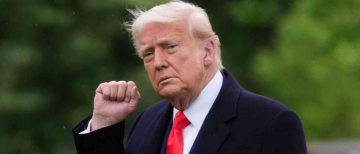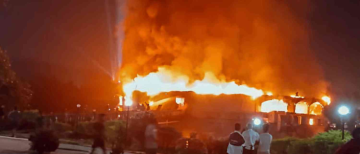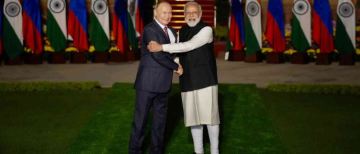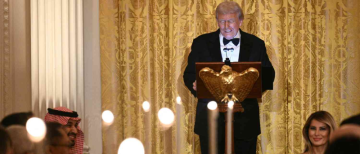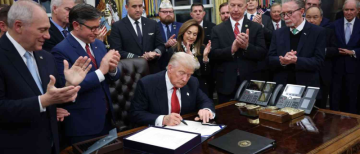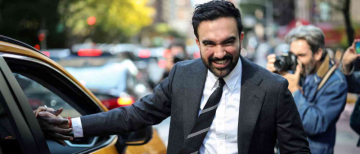In a surprising leadership reshuffle that has raised eyebrows across Washington, FBI Director Kash Patel has been quietly removed as the acting head of the Bureau of Alcohol, Tobacco, Firearms and Explosives (ATF). The decision—unannounced until recently—marks a significant shift in the Justice Department's top ranks, placing Army Secretary Daniel Driscoll at the helm of a key gun-control agency amid rising political tension around firearms regulation in the U.S.

Kash Patel's Sudden Appointment—and Swift Exit
A Short, Controversial Tenure
Kash Patel, a 45-year-old Indian-origin official, was sworn in as FBI Director in February 2025. Just three days later, he was also named acting director of the ATF, a rare dual appointment that drew scrutiny from legal experts and government insiders.
While Patel's appointment to the FBI had been part of a broader reshuffling in President Donald Trump's second term, his additional designation as ATF chief was seen as unconventional and logistically challenging.
Removed Within Days, But Not Publicly
-
Patel was reportedly removed from the ATF post in late February, only days after his swearing-in.
-
However, there was no public announcement of the decision. In fact, Patel continued to be listed as the ATF’s acting director on the agency’s website well into April 2025.
-
He was even referenced as the acting director in an April 7 ATF press release, despite no longer holding the position.
-
It wasn’t until this week that senior ATF officials were formally informed that Daniel Driscoll had taken over.
This lack of transparency around Patel’s removal has drawn criticism for what appears to be an opaque handling of a major leadership change in a key federal agency.
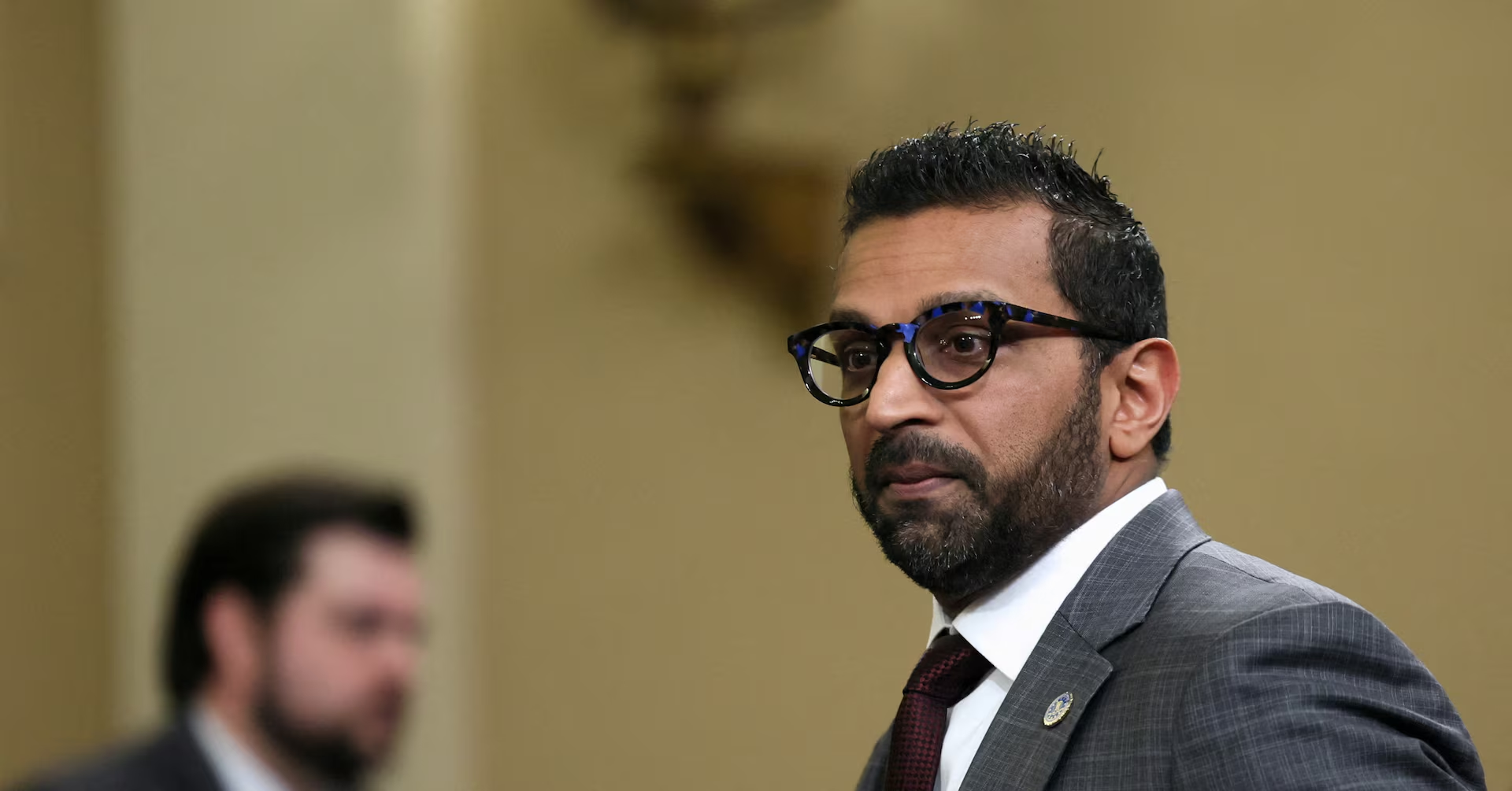
Why Was Kash Patel Removed?
Though no official reason has been offered, several factors appear to have contributed to Patel's removal from the ATF:
1. Not Due to Performance
A Justice Department official told multiple outlets, including Reuters, that Patel’s removal “had nothing to do with job performance.”
2. Interim Appointment
White House spokesperson Harrison Fields described the dual role as a temporary designation meant to fill a vacancy until a Senate-confirmed appointment could be made.
“Director Patel is now doing an excellent job at the FBI and delivering strong results,” Fields emphasized.
3. Logistical Overload
Patel’s concurrent leadership of two large and complex agencies—the FBI and the ATF—was considered unmanageable by many insiders.
-
Reports indicated that Patel rarely engaged with ATF matters.
-
He had only visited ATF headquarters once, and his involvement with the agency was limited to asking for a greater focus on violent gang crime.
-
Beyond that, agency insiders said Patel’s presence was minimal, if not entirely absent.
4. Internal Discontent
Career staff at ATF were reportedly shocked by Patel’s appointment and found the process to be disruptive. His abrupt arrival and swift disengagement sowed confusion within the agency.
Who Is Daniel Driscoll—And Why Was He Chosen?
A Dual Role for a Military Leader
Patel has now been replaced by Army Secretary Daniel Driscoll, who will serve concurrently as the acting ATF director. This decision has stirred debate, given the traditional separation between military roles and domestic law enforcement.
-
Driscoll is 38 years old and currently leads the United States Army, which includes approximately 452,000 soldiers.
-
As Army Secretary, he is responsible for managing over $187 billion in military budgets, overseeing billions in weapons and equipment programs, and ensuring readiness across global deployments.
Military Background and Political Ties
-
Driscoll is a North Carolina native and a former Army first lieutenant, having served less than four years in uniform.
-
He met Vice President JD Vance at Yale Law School, where they became close. Driscoll later served as a key advisor to Vance, giving him political and legal clout within the Trump administration.
Civil-Military Line Blurred
Traditionally, U.S. defense officials have worked to maintain a strict divide between military and civilian law enforcement roles. Driscoll’s appointment to lead a domestic agency like the ATF—even on an interim basis—marks a significant departure from that norm.
While military personnel do support law enforcement with intelligence and logistical assistance, they are generally prohibited from direct participation in domestic law enforcement actions.

ATF’s Expanding Role Amid Gun Rights Debate
Key Functions of the ATF
The ATF plays a critical role in:
-
Investigating violent crime, gun trafficking, arson, and bombings
-
Tracing firearms used in crimes
-
Regulating firearms dealers and enforcing gun control laws
With the Trump administration’s intensified focus on gun rights, the ATF has found itself at the center of national debate on how gun laws are interpreted and enforced.
Bondi’s Second Amendment Task Force
Attorney General Pam Bondi, a vocal defender of the Second Amendment, has launched a new Justice Department task force aimed at reinforcing gun rights.
-
The ATF will serve on the task force, alongside the DOJ’s Civil Rights Division and other units.
-
The task force is designed to counter firearms regulations implemented during President Biden’s tenure, following orders from President Trump for a full policy review.
Policy Rollbacks
The ATF recently repealed its “zero tolerance” policy, which mandated automatic revocation of licenses for gun dealers committing major violations, such as not conducting background checks.
This rollback signals a broader deregulatory trend under the Trump-Bondi regime.
A Broader Strategy: Cost-Cutting and Consolidation?
According to sources cited by Reuters, Patel’s removal and Driscoll’s dual appointment may be part of a larger strategy within the Justice Department:
-
Senior DOJ officials are reportedly considering a merger between the ATF and the DEA (Drug Enforcement Administration).
-
The potential merger is being framed as a cost-cutting measure amid broader efforts to streamline federal operations during Trump’s second term.
-
This coincides with other staffing upheavals and rapid-fire administrative reversals across multiple federal agencies.
What Comes Next for the ATF?
The implications of this leadership shift are still unclear. Questions remain about:
-
How Driscoll will balance his Army and ATF duties
-
Whether this military-civilian fusion will set a precedent
-
How the agency’s regulatory approach may evolve under pro-gun leadership
-
If and when a Senate-confirmed ATF director will be named
While Kash Patel continues to lead the FBI—an agency facing its own challenges—his brief, tumultuous tenure at the ATF has sparked conversations about governance, transparency, and the politicization of federal law enforcement under the Trump administration.
Kash Patel’s removal as acting ATF chief may have been positioned as routine, but the surrounding opacity, internal unrest, and abrupt leadership change suggest otherwise. With Army Secretary Daniel Driscoll stepping in as his replacement, the Trump administration is not only blurring traditional lines between defense and law enforcement but also reshaping the ATF’s future in a volatile political climate. As the nation grapples with gun violence and legal reform, the stakes of this reshuffling extend far beyond bureaucratic boundaries.
With inputs from agencies
Image Source: Multiple agencies
© Copyright 2025. All Rights Reserved Powered by Vygr Media.





